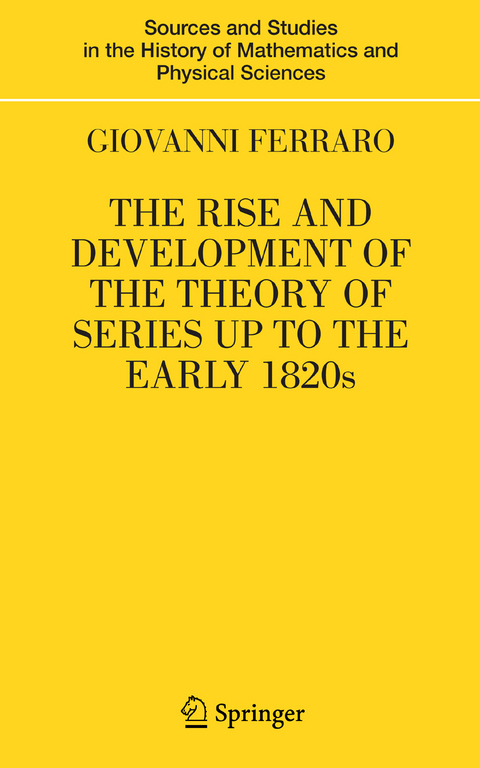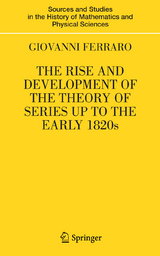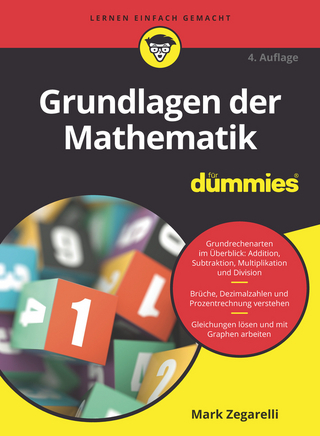The Rise and Development of the Theory of Series up to the Early 1820s
Springer-Verlag New York Inc.
978-0-387-73467-5 (ISBN)
The theory of series in the 17th and 18th centuries poses several interesting problems to historians. Indeed, mathematicians of the time derived num- ous results that range from the binomial theorem to the Taylor formula, from the power series expansions of elementary functions to trigonometric series, from Stirling’s series to series solution of di?erential equations, from theEuler–MaclaurinsummationformulatotheLagrangeinversiontheorem, from Laplace’s theory of generating functions to the calculus of operations, etc. Most of these results were, however, derived using methods that would be found unacceptable today, thus, if we look back to the theory of series priortoCauchywithoutreconstructinginternalmotivationsandtheconc- tual background, it appears as a corpus of manipulative techniques lacking in rigor whose results seem to be the puzzling fruit of the mind of a - gician or diviner rather than the penetrating and complex work of great mathematicians. For this reason, in this monograph, not only do I describe the entire complex of 17th- and 18th-century procedures and results concerning series, but also I reconstruct the implicit and explicit principles upon which they are based, draw attention to the underlying philosophy, highlight competing approaches, and investigate the mathematical context where the series t- ory originated. My aim is to improve the understanding of the framework of 17th- and 18th-century mathematics and avoid trivializing the complexity of historical development by bringing it into line with modern concepts and views and by tacitly assuming that certain results belong, in some unpr- lematic sense, to a uni?ed theory that has come down to us today.
From the beginnings of the 17th century to about 1720: Convergence and formal manipulation.- Series before the rise of the calculus.- Geometrical quantities and series in Leibniz.- The Bernoulli series and Leibniz’s analogy.- Newton’s method of series.- Jacob Bernoulli’s treatise on series.- The Taylor series.- Quantities and their representations.- The formal-quantitative theory of series.- The first appearance of divergent series.- From the 1720s to the 1760s: The development of a more formal conception.- De Moivre’s recurrent series and Bernoulli’s method.- Acceleration of series and Stirling’s series.- Maclaurin’s contribution.- The young Euler between innovation and tradition.- Euler’s derivation of the Euler–Maclaurin summation formula.- On the sum of an asymptotic series.- Infinite products and continued fractions.- Series and number theory.- Analysis after the 1740s.- The formal concept of series.- The theory of series after 1760: Successes and problems of the triumphant formalism.- Lagrange inversion theorem.- Toward the calculus of operations.- Laplace’s calculus of generating functions.- The problem of analytical representation of nonelementary quantities.- Inexplicable functions.- Integration and functions.- Series and differential equations.- Trigonometric series.- Further developments of the formal theory of series.- Attempts to introduce new transcendental functions.- D’Alembert and Lagrange and the inequality technique.- The decline of the formal theory of series.- Fourier and Fourier series.- Gauss and the hypergeometric series.- Cauchy’s rejection of the 18th-century theory of series.
| Reihe/Serie | Sources and Studies in the History of Mathematics and Physical Sciences |
|---|---|
| Zusatzinfo | 21 Illustrations, black and white; XVI, 392 p. 21 illus. |
| Verlagsort | New York, NY |
| Sprache | englisch |
| Maße | 155 x 235 mm |
| Themenwelt | Mathematik / Informatik ► Mathematik ► Allgemeines / Lexika |
| Mathematik / Informatik ► Mathematik ► Analysis | |
| Mathematik / Informatik ► Mathematik ► Geschichte der Mathematik | |
| ISBN-10 | 0-387-73467-8 / 0387734678 |
| ISBN-13 | 978-0-387-73467-5 / 9780387734675 |
| Zustand | Neuware |
| Haben Sie eine Frage zum Produkt? |
aus dem Bereich




